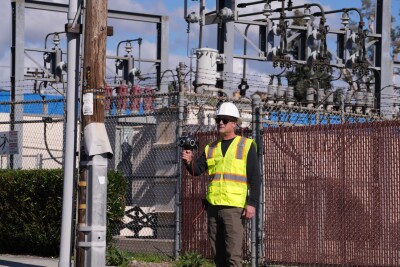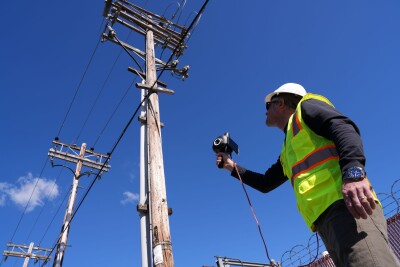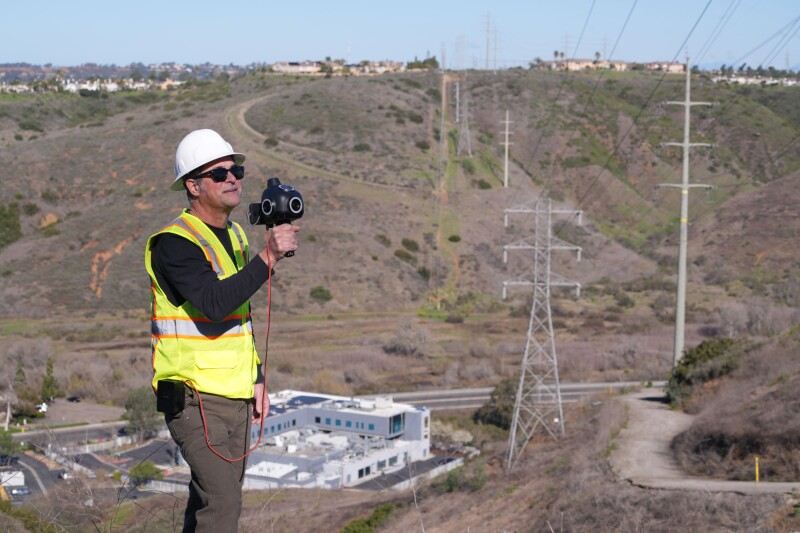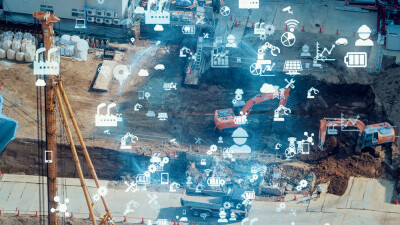Late last month, Looq AI (pronounced “look”) announced the launch of their Looq platform, which they describe as “AI-enabled digital twin technology,” and which includes both hardware and software. The Looq platform is based on imagery from the company’s proprietary camera technology, the Q, and utilizes AI to collect and analyze that data at scale. The release is the company’s first as they emerge from stealth after their founding in 2021, and they are initially focusing on working with the electric utility space, though not exclusively. As part of this announcement, Looq added that they’d raised $2.6 million in a preferred series seed funding round.
To learn more about this release and the company overall, Geo Week News recently spoke with Looq’s CEO and Co-Founder Dominique Meyer.
In hearing about Meyer’s personal background, what instantly stands out is how this is combining his previous experience with a new sector. He just recently finished his PhD in 3D computer vision and robotics, with the work largely revolving around “how we use [camera systems] for self-driving vehicles and robotics.” Prior to Looq, he’d worked with a company called CamerEye and another called Spectral MD, both of which utilized imagery data and leveraged AI to analyze that data. Now, many of those same principles are being applied to AEC broadly.

In his previous experience, including as he worked towards his PhD, Meyer worked on both hardware and software. In talking about how that kind of experience helps in building this kind of product, he said, “In today’s world where AI is, I think there is often an opportunity to expand on having core hardware understanding and how that influences AI design.”
As far as the starting place for the company, they’ve found a fit with the electric utility industry to start things out, Meyer said. “As we started, we saw the application that fits in the electric utility space, so we started focusing our go-to-market strategy on that. People are really excited about showcasing this really exciting technology on digitizing our built world because we live in a lot of physical assets, and we need to learn how to operate and maintain them better and smarter.”
In terms of the actual platform, Looq describes it as an “end-to-end” workflow that includes both hardware and software components. The hardware refers to the camera system, known as “Q.” The system includes four different cameras – one facing forward, one upward, and one on each side – for a complete field-of-view, and includes a place for users to connect their phone for UI purposes, according to Meyer. Q is mostly made for handheld use, and can also be mounted to a vehicle “in certain environmental conditions.”
One of the big distinctions Meyer and Looq have made in this release is that they are focusing on utilizing imagery over laser scanning, a very intentional choice which largely relates back to excitement in the sector based on price point differences between the two technologies. Meyer says they are able to capture “about 100 times the data rates and spatial sampling compared to a laser system.”
Where Meyer and Looq see themselves as differentiators in the space is the speed at which they are able to both capture the data and convert it into 3D models, or digital twins, for their clients. This is where the AI background comes into play. When asked what work exactly these algorithms are completing, Meyer says the company is focused on “enabling and supporting user-based workflows,” and that they are working to “bring the end value.” More specifically, he points towards being able to quickly do geometric estimation and deriving “high-level semantic information.”
That said, he acknowledges that AI is not going to be able to complete full workflows, something they keep in mind when building this kind of platform. “I think it’s important to be very aware how AI helps automate some of the repetitive tasks in an industry,” Meyer told Geo Week News. “But at the end of the day, humans are great at decision-making based on the information they have.”

There are a couple of things that stand out in both reading Looq’s release and speaking with Meyer, one of which being the repeated use of the term “digital twin.” As we know, this is a term that can mean many different things to different people, so it made sense to hear directly from the source what exactly is meant when Looq refers to digital twins.
Meyer told Geo Week News that the “core idea is that you have a digital representation of a physical asset, the degree of what information is contained and how it’s represented varies greatly.” He went on to say, “I see a future where those digital twins go down to engineering-grade models for specific assets, where we see nuts and bolts, where we see when that was last updated and we see the history.”
Along with the repeated usage of digital twins, it also stands out how specifically focused the company is on the electric utility space. This is certainly not unique to Looq, but rather a larger trend that can be seen throughout the data capturing industry, whether it be with imagery or laser scanning where companies are focusing on a specific space, whether it be electric utilities, heavy construction sites, roadways, or any other similar example.
From the outside, it would seem that the next step in the industry, however long it may take, is for consolidation to take place between these specifically focused companies. While Meyer didn’t directly address this broader idea, he did make clear that this idea of focusing on a specific vertical is core to Looq’s strategy for the time being, saying, “I believe in integrating into workflows and creating very distinct value across the whole stack of that vertical industry,” speaking about the electric utility space.
He’d continue, “We make sure that we can help expand that grid to support the capacity we need for EVs, for different driving demands in the electric space. And by creating this vertical focus, we can really drive that value very heavily and quickly in the markets, and I encourage a lot of other companies to go after that vertical focus as well in the future.”




.jpg.small.400x400.jpg)

